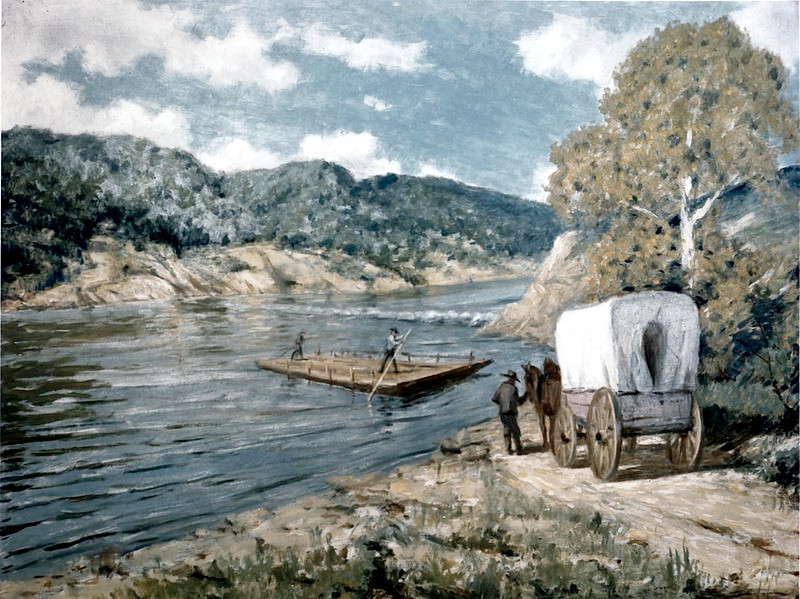
ferries were authorized by the General Assembly in the colonial era, and were essential for north-south travelers to cross large rivers flowing east-west
Source: Federal Highway Administration, 1797 Zanes Trace (painting by Carl Rakeman)

ferries were authorized by the General Assembly in the colonial era, and were essential for north-south travelers to cross large rivers flowing east-west
Source: Federal Highway Administration, 1797 Zanes Trace (painting by Carl Rakeman)
Starting in the colonial period, the General Assembly authorized ferries and set rates. Ferries were one of the few places where travelers outside of Williamsburg needed money in the early 1700's. There were no hotels and few taverns to provide food and shelter. It was the custom of the country for travelers to approach a house at the end of their day's trip. They would be treated as guests, provided meals and a bed plus food for their horses, with no compensation accepted.
However, ferrymen had to be paid in specie (typically Spanish dollars). One traveler in 1702 described what was done when arriving on a riverbank and discovering the ferry was on the other side:1
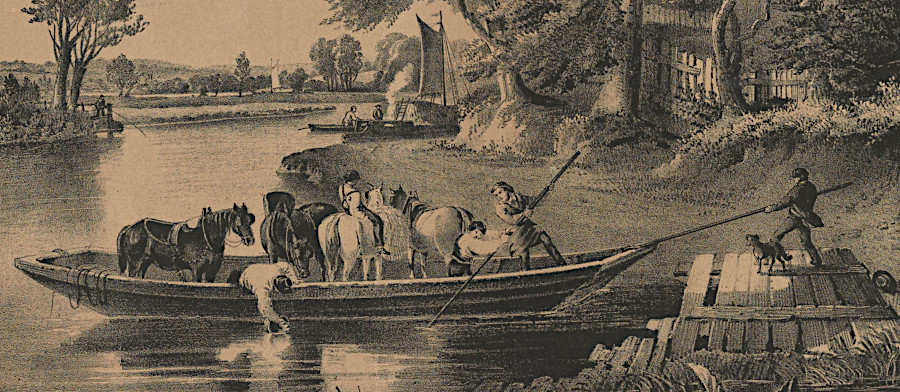
ferries carried passengers, hoprses, and cargo
Source: Library of Congress, The ferry boat (Currier and Ives engraving by Fanny Palmer)
Ferries enable passengers to cross Virginia's rivers without getting wet - unless something goes wrong, which happened to President George Washington on his tour of the southern states in 1791.
After meeting with landowners in the future District of Columbia and convincing them to sell land at a fair price for public facilities, he stayed several days at Mount Vernon and then headed south to Savannah, Georgia. When he left on Thursday, April 7, he quickly encountered a problem crossing the Occoquan River to reach the southern shore at Woodbridge. Washington recorded the incident on the ferry operated by the Mason family:2
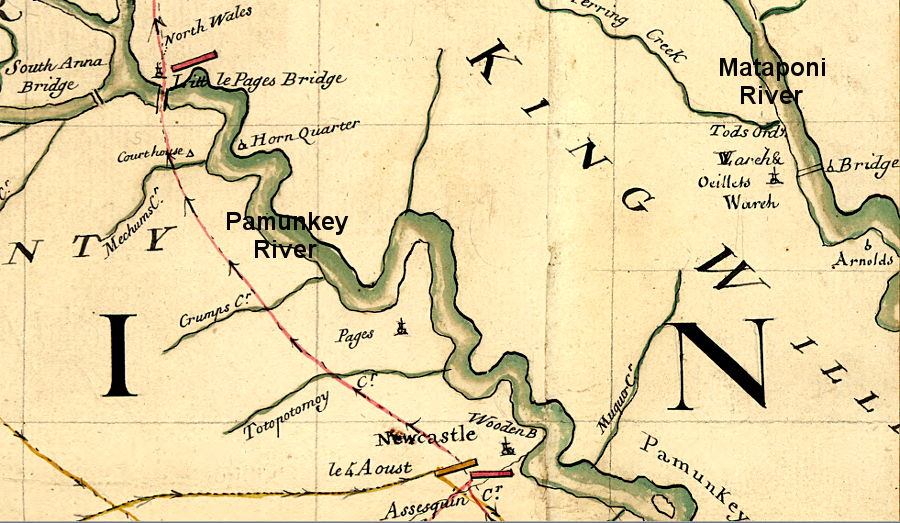
in 1781 bridges crossed the South Anna, Pamunkey, and Mattaponi rivers where they were narrow, upstream of West Point
Source: Library of Congress, Campagne en Virginie du Major General M'is de LaFayette: ou se trouvent les camps et marches, ainsy que ceux du Lieutenant General Lord Cornwallis en 1781
Not all ferries were developed for public use. Large landowners with property on both sides of a river had private ferries. No ferryman waited for customers to appear on a road; private ferries ran only when the property owner had a need to cross the river.
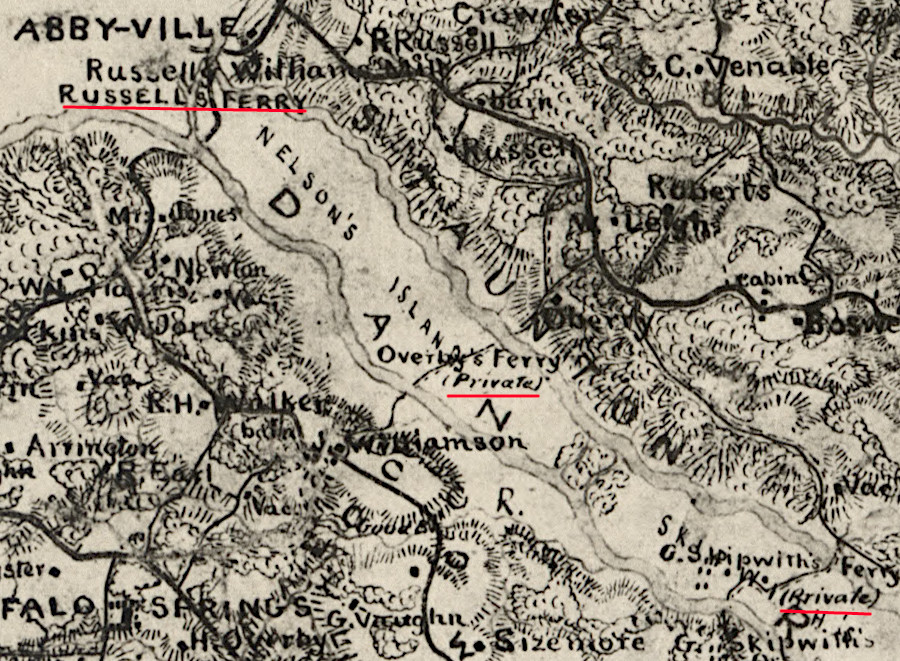
in 1864, there were public and private ferries on the Roanoke River upstream of Clarksville
Source: Library of Congress, Map of Mecklenburg County, VA (1864)
In the 1900's, the state legislature funded bridges that put ferries out of business. In 1940 the state acquired the Hatton Ferry, which since 1870 had crossed the James River near Scottsville to provide access from the southern side to the James River and Kanaha Canal on the north side. The ferry spurred establishment of a post office five miles southwest of Scottsville.
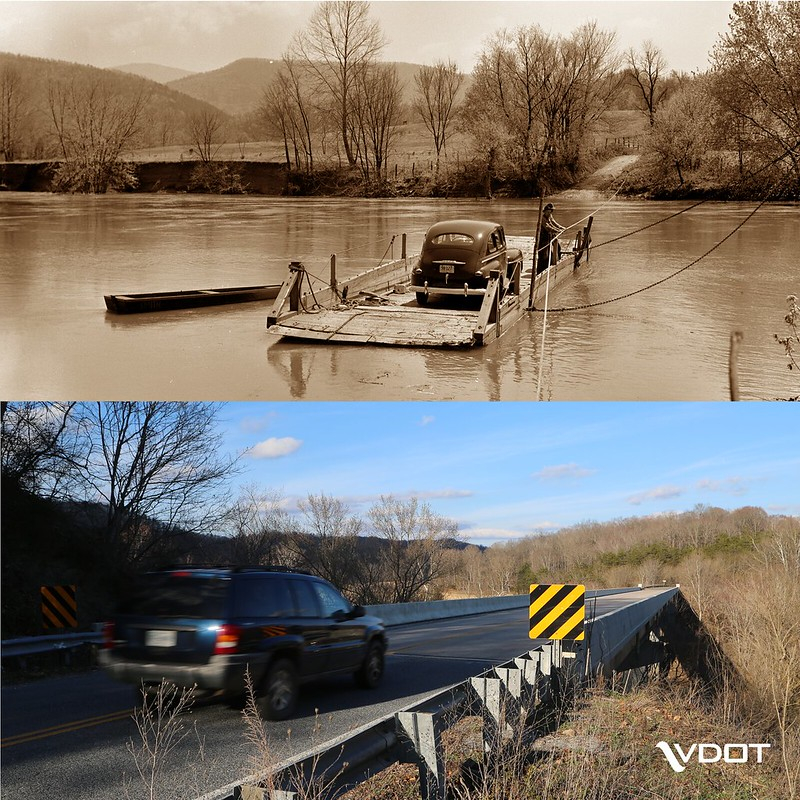
almost all ferries have been replaced by bridges
Source: Virginia Department of Transportation, Indian Rock Ferry (Botetourt County)
The Hatton Ferry was attached to a rope or chain that stretched across the river between Albemarle and Buckingham counties. A ferryman used a pole to align the boat so the power of river currents would push it across to the other bank. There was no engine to move the boat; the ferry man had to angle the ferry so the river pushed it across while the rope prevented the ferry from washing downstream. The trip was quiet except for the noise of horses and passengers, plus the creaking of the ferry boat in the river currents.
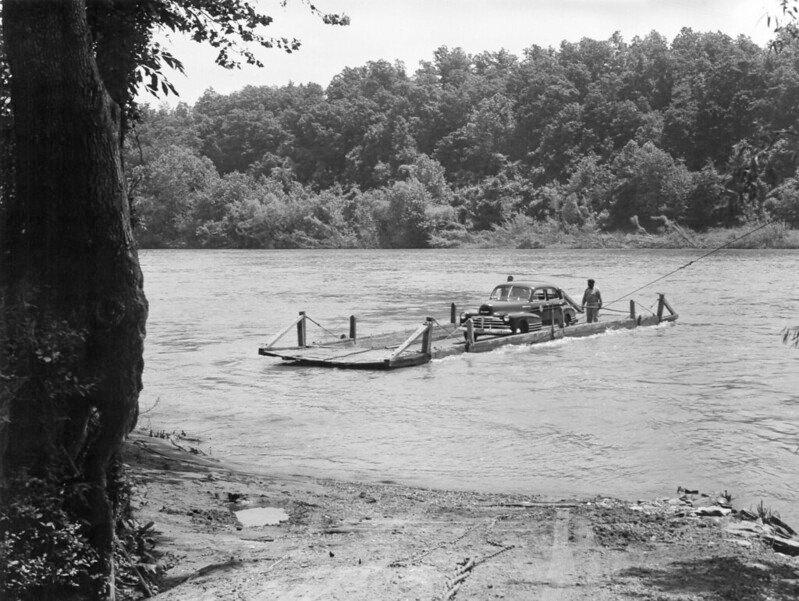
the Hatton Ferry in 1949, when Virginia Department of Highways operated it
Source: Virginia Department of Transportation, Hatton Ferry
The Hatton Ferry was privatized in 2010, long after most drivers had chosen to use the Route 20 bridge at Scottsville just several miles away rather than wait for a quaint ferry ride. A decade later, a flood broke the chain and the boat was washed up on the Buckingham County shore. To restore operations, a new coalition of people concerned about preserving local history sought organized a non-profit that acquired the ferry and donated it to Buckingham County.
With funding from local donors to the Albemarle Charlottesville Historical Society, the ferry was lifted from the bank and placed back into the river for a restart in 2022. The privately-operated ferry offered rides between mid-May to the end of October, with capacity for two cars and six people - though it once managed to carry 18 Harley-Davidson motorcycles. Riding the pole-operated ferry was provided as a tourist opportunity and a historic experience, not as a speedy James River crossing for travelers in a hurry.
At one time, there were 1,000 poled ferries in the United States. In 2023, the non-profit operating the ferry learned that it was not the "last" pole-operated ferry in the United States. In West Virginia, a similar ferry known as the Barge crossed the Greenbrier River to access Camp Alleghany. Access to that pole-operated ferry, started in 1921, was limited to people at the camp.
The Albemarle Charlottesville Historical Society shut down the Hatton Ferry in 2025. It had managed to operate for only 16 days in 2024 due to high/low water and the availability of volunteers. The ferry boat (an old barge), cable across the river, and towers to hold the cable required $50,000 of deferred maintenance in the short run. In addition, there were continuing risks that were a liability for the historical society.3
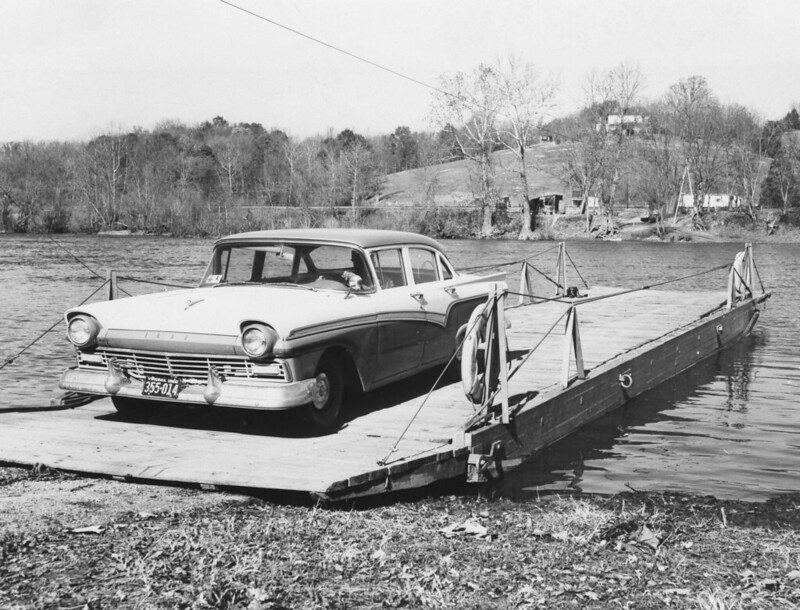
the Hatton Ferry, powered by using a pole to align the boat so river currents pushed it, ended up as a historic resource rather than a transportation link
Source: Virginia Department of Transportation, Hatton Ferry
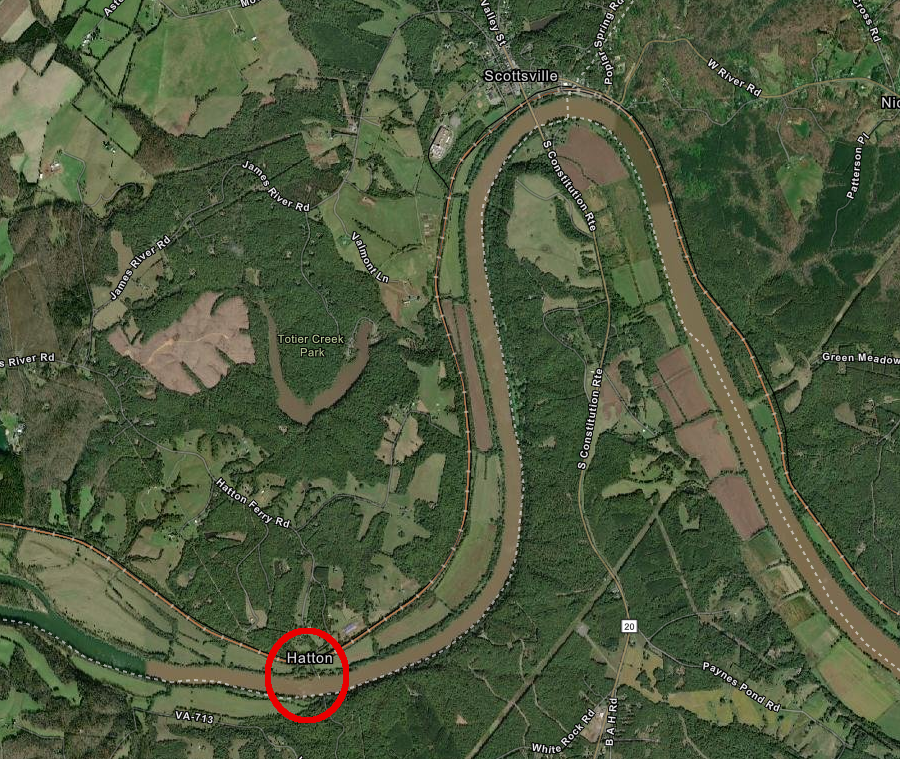
a bridge over the James River at Scottsville made the Hatton Ferry superfluous
Source: ESRI, ArcGIS Online
The Gloucester-Yorktown ferry crossed the York River until 1952, when the state built the longest double swing bridge in the world.
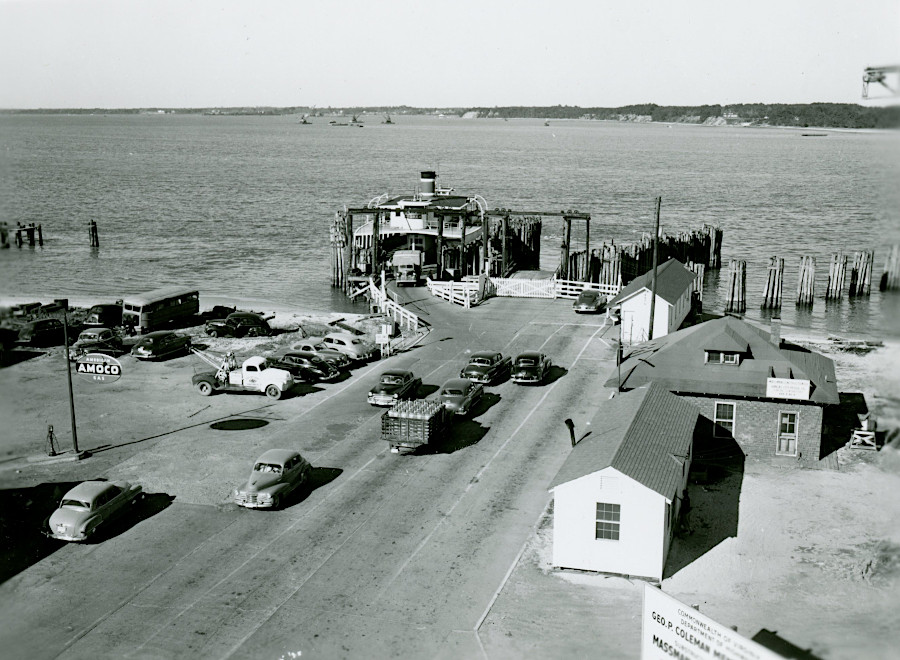
ferry between Yorktown and Gloucester Point crossing the York River in February, 1952
Source: National Archives, Ferry Over York River
Drivers crossing the Coleman Bridge paid a toll until 1989, to cover its construction costs. A replacement bridge, constructed with prefabricated parts, was installed in just nine days in 1995. It still swings open to allow passage of warships to the US Naval Weapons Station and the paper mill further upstream at West Point.4
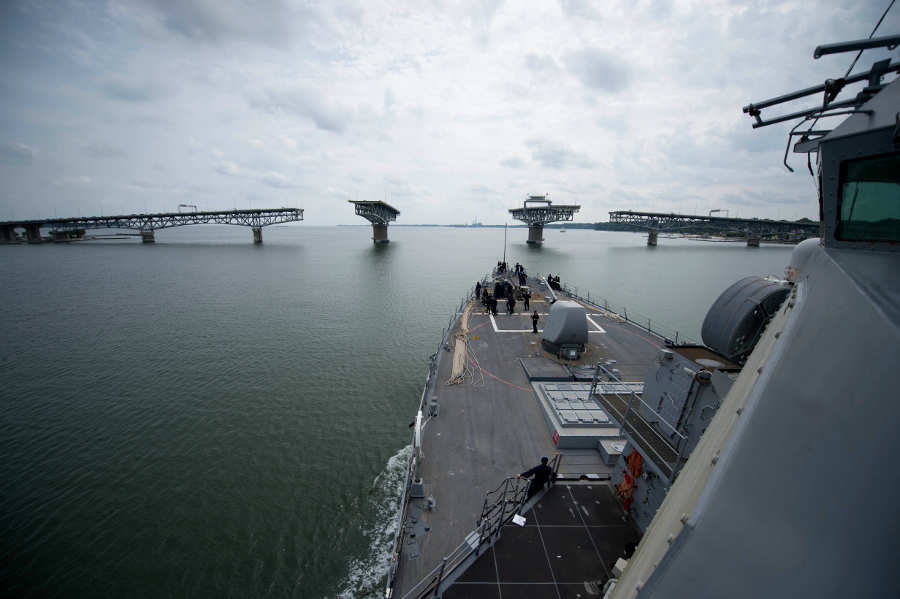
the 1995 version of the Coleman Bridge swung open in 2015 to permit passage of the guided-missile destroyer USS Carney
Source: US Navy (150912-N-XG464-068)
Alexandria started as a port city, with ferries for crossing the Potomac River until the first Long Bridge was constructed in 1808.
During the Civil War, the US Military Railroad ferried loaded freight cars from Alexandria to Aquia Landing to supply the Union Army. Rails were placed on a barge, which was carefully aligned with rails on the wharf. The barges with boxcars served as the first container ships on Virginia waters.
After the Pennsylvania Railroad gained monopoly control of rail traffic using Long Bridge in 1870, the Baltimore and Ohio (B&O) Railroad built a "car float" to ferry loaded rail cars across the Potomac River. The rail ferry barged cars between Shepherd's Landing in the District of Columbia and the railroad's wharf at the end of Wilkes Street. That ferry operation ended in 1906, when the railroads negotiated a deal to share a new Long Bridge and interchange cars at the new Potomac Yard in Alexandria.5
One other railroad ferry operated in Virginia. The New York, Philadelphia and Norfolk Railroad reached the southern end of the Eastern Shore in 1884. A railroad bridge across the mouth of the Chesapeake Bay was not realistic, so the railroad created a car float.
Rail cars were loaded on a barge which had its own set of rails, then ferried between wharves at Cape Charles and the southern side of Hampton Roads. The car float operated from 1885-2018, when the Bay Coast Railroad (successor to the New York, Philadelphia and Norfolk Railroad) ceased operations and most of the track on the Eastern Shore was abandoned.
The car float operations were occasionally dangerous. A loaded barge sank in Cape Charles harbor in 1981, ruining the cement, paper products, and Ford pickups in the railcars.
The New York, Philadelphia and Norfolk Railroad also chartered a passenger ferry between Cape Charles, Fort Monroe, and Norfolk. The Railroad Ferry Company served customers using the train.
Starting in 1933, the railroad also sponsored the Virginia Ferry Corporation. That company provided ferry services for all passengers and freight between Cape Charles and Little Creek in Princess Anne County. The Virginia Ferry Corporation used the railroad's wharves at each end, and half of its directors were also directors on the Railroad Ferry Company.
In 1950, the Virginia Ferry Corporation moved its Eastern Shore terminal to a wharf at Kiptopeke; that reduced the trip across the Chesapeake Bay by 12 miles. In 1953, the Railroad Ferry Company stopped its passenger ferry. The ferry boat needed expensive repairs before it could pass Coast Guard inspection, and the business was not profitable. The Pennsylvania Railroad had provided over $4 million in subsidies to keep the passenger ferry in business between 1935-1953.
The end of the ferry service interrupted the main route of travel between Accomack and Northampton counties and the Peninsula, and required a more circuitous route for Eastern Shore travelers to get to Richmond.6
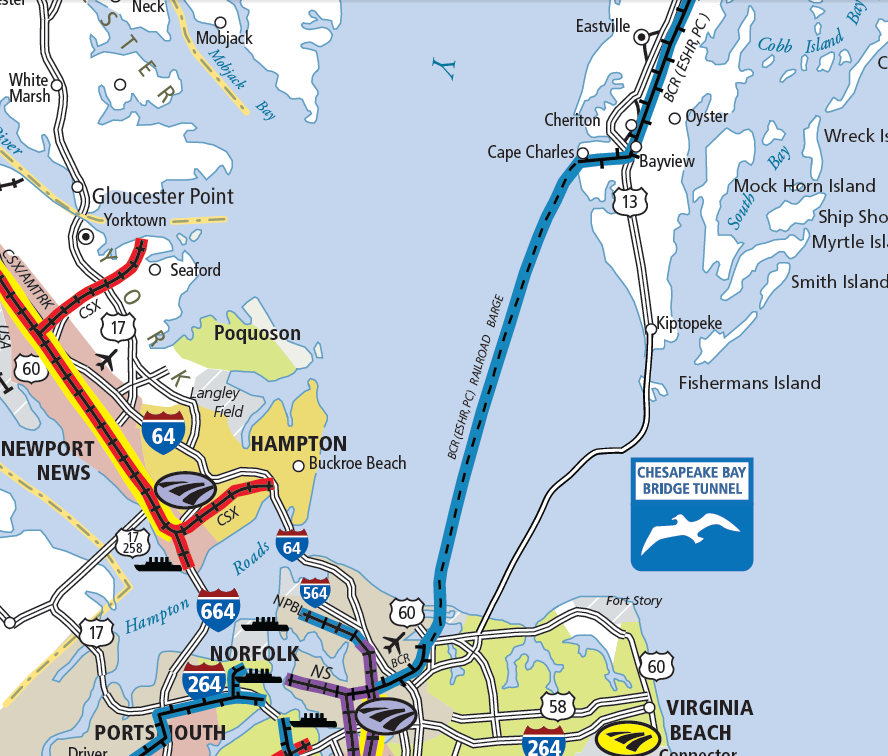
until 2018, the Bay Coast Railway ferried railroad freight cars between Cape Charles-Little Creek
Source: Virginia Department of Rail and Public Transportation, Virginia Railroad Map (2012)
In 2008, the Alexandria tour boat company that offered waterfront cruises for tourists expanded to provide regular water taxi service linking Alexandria to National Harbor in Maryland. By 2014, it had added a "Baseball Boat" to carry passengers to the Washington Nationals baseball games and concerts at the stadium in Anacostia, and a water taxi connecting with Georgetown and the National Mall.7
The next step was the development of water transit capabilities for commuters, in addition to tourists. A 2014 Federal grant to the Northern Virginia Regional Commission funded the initial start of a ferry between Jones Point Park in Alexandria and Joint Base Anacostia-Bolling in Washington DC.
The ferry would provide workers who live in Northern Virginia a new way to access the headquarters of the Department of Homeland Security, eliminating the need to drive across the Woodrow Wilson Bridge. None of Alexandria's water services carry cars; all provide room for just people.8
In 2016, the private company operating water taxis between Old Town Alexandria and National Harbor, plus seasonal trips to the National Mall and the Washington Nationals ballpark, announced plans to acquire four new 100-passenger boats and start daily water taxi service in 2017. The trigger for the new, scheduled service was opening of new buildings at The Wharf in the District of Columbia. The company identified Reagan National Airport as a potential docking site as well, but the main justification of the expansion was to expand beyond tourists to provide reliable service to the commuter customers.9

ferry passing in front of Jamestown
One part of Northern Virginia was left out of the new commuter ferry plans - the area downstream of Alexandria, in Fairfax and Prince William counties. The military was unwilling to open up Fort Belvoir or Quantico to commuter ferry use, and short routes crossing the Potomac River had greater benefit/cost ratios than routes running north-south parallel to I-95 and the Virginia Railway Express (VRE).10
In Hampton Roads, a ferry has transported people, animals and freight across the Elizabeth River since 1636. Adam Thoroughgood started the first ferry in Virginia with a skiff. It was not the first ferry in the future United States. The first public ferry service started in 1631, and connected the northern end of Boston to Charlestown.
Starting in 1720, a boat carried horse-drawn wagons. Men paddled the ferries until a paddleboat went into service in 1821. Blind horses on treadmills powered the paddleboats until a steam-powered ferry started in 1832. Between 1862 and 1865, the Union Army occupied Hampton Roads and operated ferries across the Elizabeth River.
The Downtown Tunnel provided a direct connection between Norfolk and Portsmouth starting in 1952 and ferry service stopped in 1955. A Portsmouth resident gambled that restarting ferry service would be profitable. He bought a ferryboat in 1983, brought it up the Intracoastal Waterway, and celebrated 40 years of success in 2023. By that time he was president of Norfolk by Boat, and the public agency provided the ferry service. That agency started as Tidewater Regional Transit, but changed its name to Hampton Roads Transit.11
Between 1999-2002, HarborLink offered a tourist-oriented ferry between Norfolk and Hampton. Since then, service has been limited to just crossing the Elizabeth River to connect Portsmouth-Norfolk.
Hampton Roads Transit ferries schedule stops at two docks in Portsmouth, at North Landing and High Street. There is one stop at Waterside in Norfolk, plus a second stop at Harbor Park when the Norfolk Tides baseball team has a game. The three 150-passenger paddlewheel ferries are scheduled to run a least every 30 minutes, with additional service during peak hours in the summer.
Hampton Roads Transit ferries carried 220,000 passengers across the Elizabeth River in 2023. A fourth 149-passenger boat was added to the fleet at the end of 2023 to reduce delays caused by increased post-COVID demand. At the same time, another new boat replaced an aging one. The two new mock paddle boats, Elizabeth River Ferry VI and VII, were projected to last 25-30 years.
A captain explained how two modern diesel engines powered each ferry:12
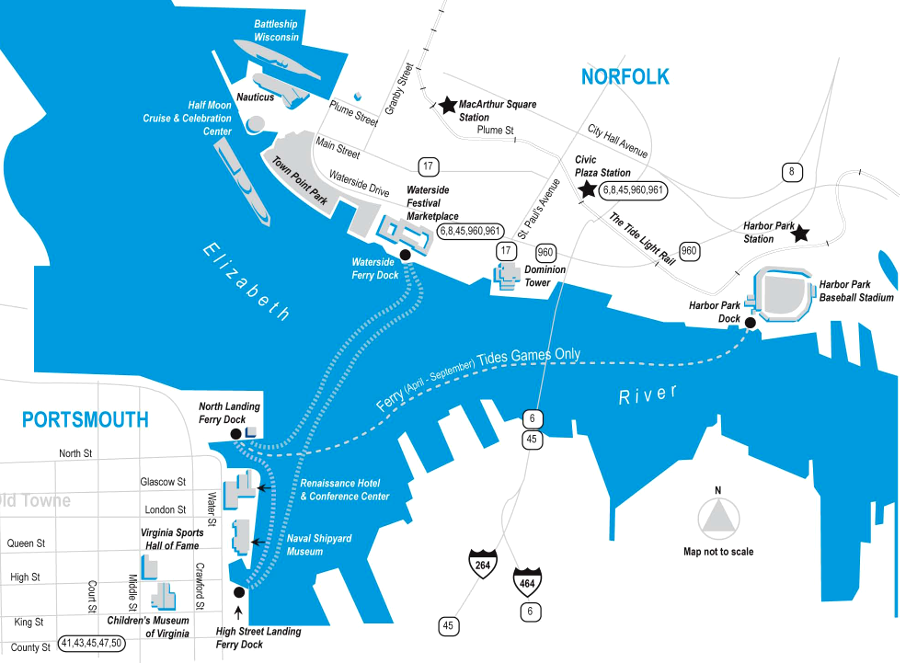
the Elizabeth River Ferry connects Portsmouth and Norfolk
Source: Hampton Roads Transit, Elizabeth River Ferry
The effort to re-start a passenger ferry in Hampton Roads to cross the James River, connecting the Peninsula with Norfolk, has been integrated more effectively into local transportation planning than the effort in Northern Virginia.
Delays at the Hampton Roads Bridge-Tunnel led to a study of the feasibility of high speed catamarans between Norfolk and the Peninsula. A slow ferry operated between Hampton and Norfolk between 1999-2002, but it failed to attract enough passengers.
The General Assembly funded a study in 2012, but the Virginia Department of Rail and Public Transportation determined that the local governments would first have to establish the planned routes of a light rail system.13
Light rail could move customers on land from their houses and jobs to a ferry dock.
A passenger ferry system might attract just a few customers if it required customers to drive their car to a ferry landing, pay to park in a garage, take the ferry, then rent another car on the other side of Hampton Roads to finish the trip. A ferry would be more likely to succeed if passengers were already moving without cars, ideally walking to from their point of origin to the ferry landing and, at the end of the trip, walking to a final destination nearby. Light rail connections to ferry landings might attract more travelers, and would reduce the need for expensive waterfront space to be used for parking.
The smart growth assumptions for "The Tide" light rail system were consistent with ferry operations, if transit-oriented development increased near light rail and there were stations at the waterfront. Ferry landings could be magnets for new development, with a transit connection on the land side.
If a light rail line were built to the Norfolk Navy Base, for example, then the decision on where to locate a ferry landing could be aligned with the decision on where to locate the rail station at that end of The Tide. On the Peninsula end, however, there is no equivalent to The Tide. That part of Hampton Roads chose to invest transportation funding in the widening of I-66, rather than in the creation of a light rail transit system.
In 2010 and again in 2024, Hampton Roads Transit reexamined the potential of operating a passenger ferry system to connect the Peninsula and South Hampton Roads across the Janes River. The 2010 proposal considered using five catamarans traveling at over 30mph to link stations in Norfolk, Norfolk Naval Station, Portsmouth, Hampton, Newport News, and Fort Eustis. Trips lasting 15-25 minutes were projected to attract up to 1,500 daily commuters, as well as some tourists. Federal grants were envisioned to cover the initial capital costs of $28 million.
Another option was to establish ferry service between Newport News-Norfolk, and was also designed more for commuters than tourists. Capital costs for that smaller system were estimated at $15 million at the time.
The 2024 proposal was to offer a passenger ferry service between just Newport News-Norfolk. The demand for a ferry connection between Hampton-Norfolk was predicted to be low. In 2024, expansion of the Hampton Roads Bridge-Tunnel, a nearly $4 billion project, was well underway. I-64 had been expanded west past Newport News as well, but shipyard workers in particular might prefer a more-direct connection between Norfolk and their job site.
Newport News had already included a ferry dock at 28th Street, near Newport News Shipbuilding, in its long-range Downtown Vision Plan. Two other locations in the city, plus a landing site in Hampton, were also considered. A fast ferry to Newport News would require a 50 minute trip on the water. The paddlewheel ferries used between Norfolk-Portsmouth would be too slow, and were unsuitable for travel outside the protected waters near Portsmouth.
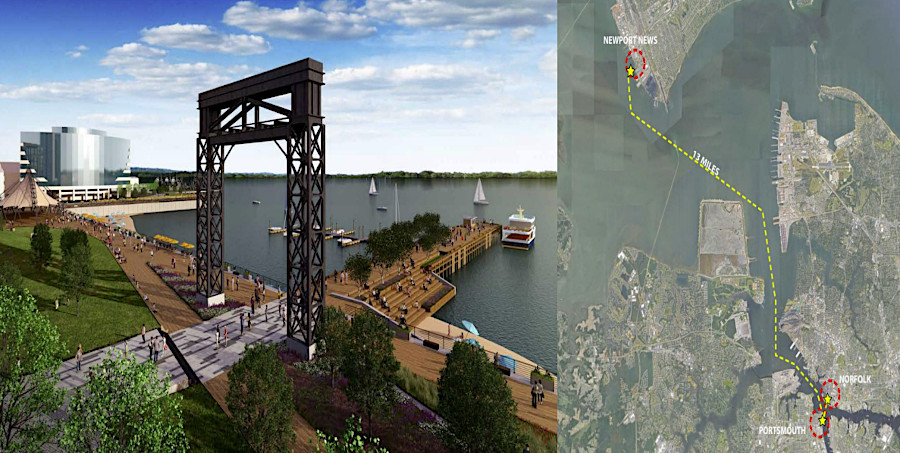
a fast passenger ferry dock could be constructed at 28th Street in Newport News
Source: Hampton Roads Transit, Peninsula Ferry Feasibility
and Market Study (presented to Newport News City Council on August 13, 2024)
Peak demand at morning rush hour between 6:00-9:00am was estimated at 155-235 passengers per day. Capital costs could reach $25 million, and annual operating costs were estimated at $2-3 million.
As a business proposition, no private company would take the risk of starting a ferry service for such a small potential return on investment. As a public service, however, water-based transportation might be justified in addition to the billions being spent to upgrade the roads and double the capacity of the Hampton Roads Bridge-Tunnel.
A Hampton Roads Transit official, when asked why a passenger ferry from Norfolk to the Peninsula in 2024 might be feasible after the previous operation closed in 2022, said:14
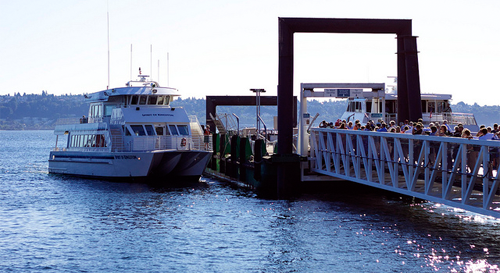
a high-speed passenger ferry from the Peninsula to Norfolk could connect with The Tide light rail transit system
Source: Federal Transit Administration, Seattle Ferry
White's Ferry on the Potomac River closed in late 2020, but the Hatton Ferry reopened in 2022. Two private ferries provide connections to Tangier Island. One sails from Reedsville in the summer only. The other sails all year from Onancock on the Eastern Shore.
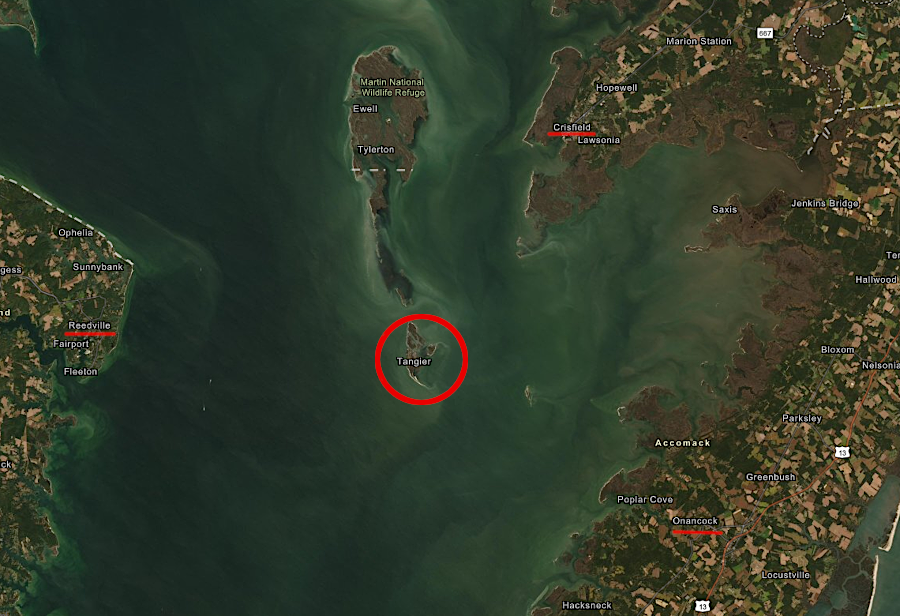
Tangier Island depends upon year-round ferry traffic from Crisfield, Maryland and summertime connections to Reedville and Onancock
Source: ESRI, ArcGIS Online
The other three remaining public transportation ferries in Virginia are operated by the Virginia Department of Transportation (VDOT). All carry passengers and vehicles for free.
On the Northern Neck, the Sunnybank Ferry crosses the Little Wicomico River on Route 644 in Northumberland County. The Merry Point Ferry in Lancaster County crosses the western end of the Corrotoman River.15
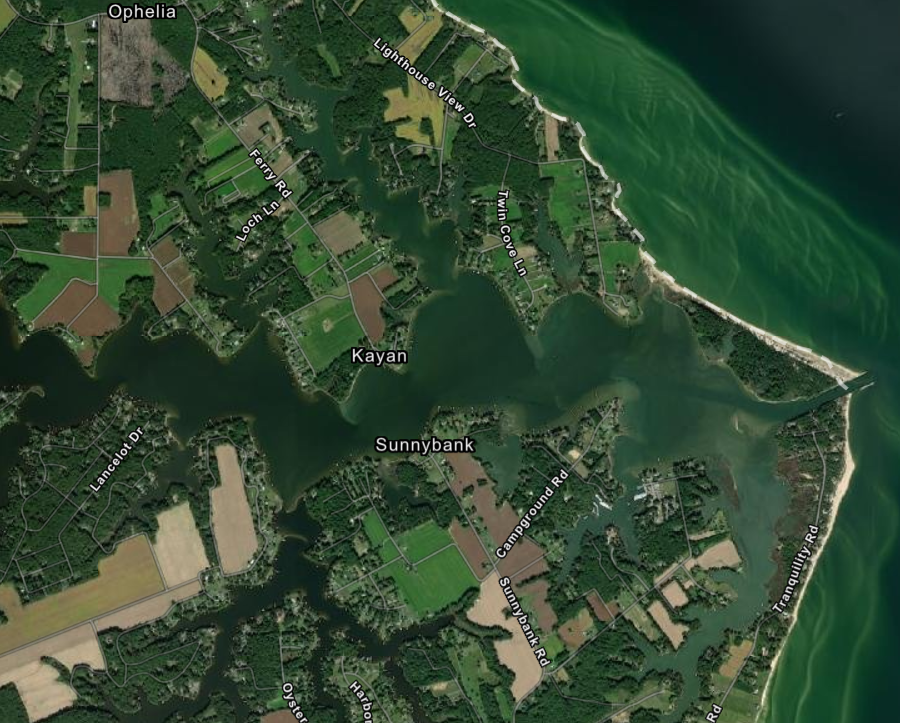
in Northumberland County, the Sunnybank Ferry crosses the Little Wicomico River between Sunnybank and Kayan
Source: ESRI, ArcGIS Online
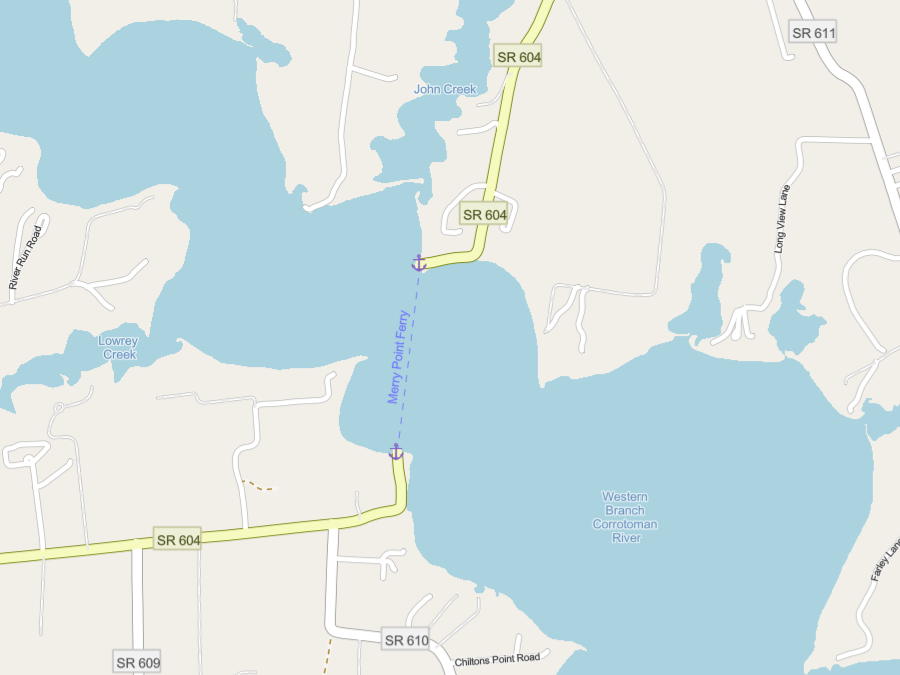
in Lancaster County, the Merry Point Ferry crosses the western end of the Corrotoman River
Source: ESRI, ArcGIS Online
The Jamestown-Scotland Ferry crosses the James River at the site of Jamestown. Before the founding of Jamestown in 1607, Native Americans used canoes to cross the river. The first English ferry was started by 1660. A publication from the National Park Service indicates a ferry was in operation in 1649.
On February 26, 1925, the first ferry capable of hauling cars across the river started operations. The Captain John Smith was able to carry 16 cars at a time. Captain Albert F. Jester, who initiated the first car ferry across the James River, sold the business to the Virginia Department of Highways in 1945.
Today the three-mile journey requires 15-20 minutes to go between the wharf just upstream from Jamestown Island and the Scotland Landing on the south shore. The Jamestown-Scotland Ferry is the only state-run ferry that runs 24 hours/day. The Virginia Department of Transportation (VDOT) operates the service using four boats:16
Powhatan (capacity 70 cars, built 2019)
Pocahontas (capacity 70 cars, built 1995)
Williamsburg (capacity 50 cars, built 1983)
Surry (capacity 50 cars, built 1979)
The slow, and at times unreliable, ferry service caught the attention of the 2025 General Assembly. It approved a resolution for the Virginia Department of Transportation to study building a new bridge across the James River, replacing the historic Jamestown-Scotland Ferry.
A resolution in 2024 had called for an engineering study for a bridge to connect to Hog Island. The legislature rejected that proposal, which included a $1.6 million price tag. The 2025 resolution called for just a feasibility study of a bridge. Rather than specify a location, it left open the possibility of connecting Surry County to any location in James City or Charles City County.
The Virginia Mercury reported:17
Source: Virginia Department of Transportation (VDOT), 90th Anniversary of the Jamestown-Scotland Ferry
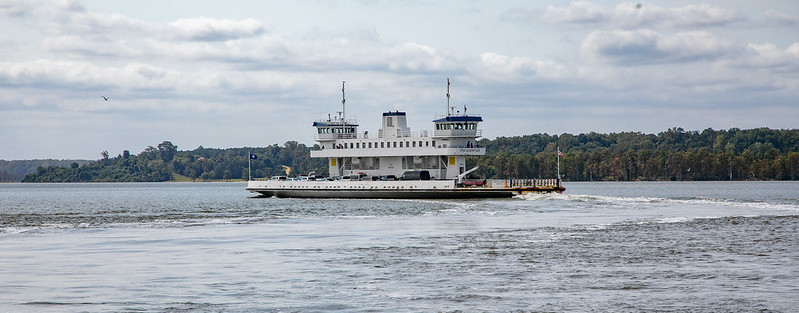
a new boat named "Powhatan" was dedicated at the Jamestown-Scotland Ferry in 2019
Source: Virginia Department of Transportation, The Pocahontas Ferry
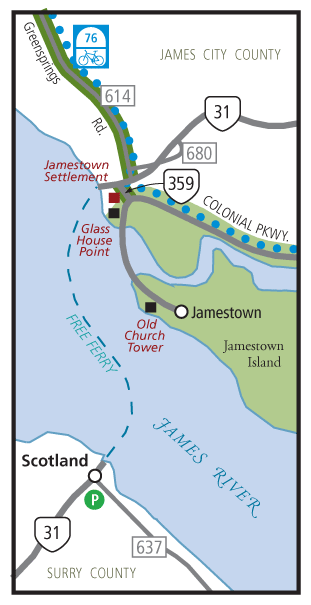
the Jamestown-Scotland Ferry connects James City County with Surry County
Source: Virginia Department of Transportation, Jamestown-Scotland Ferry
Source: Virginia Department of Transportation (VDOT), Ferry Do's and Don'ts
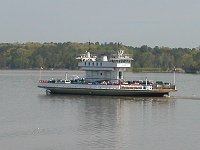
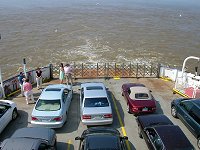
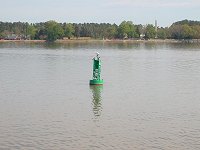
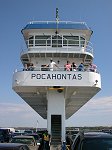
Jamestown-Scotland Ferry south of Jamestown Island (click on images for larger versions)

Scotland ferry landing (Surry County)
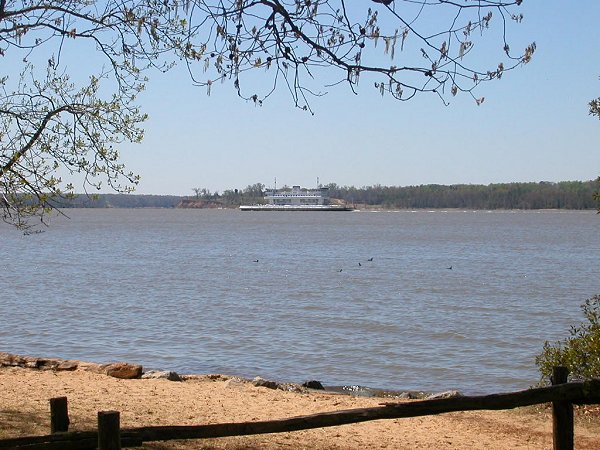
Scotland-Jamestown Ferry
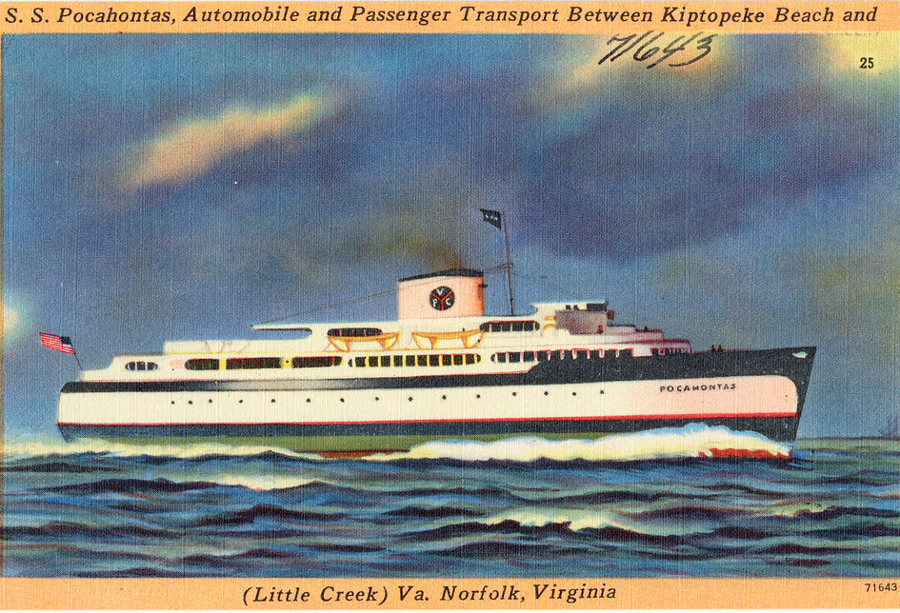
a pre-World War II postcard shows a ferry that ran between the Eastern Shore and Princess Anne County (now the City of Virginia Beach) until the Chesapeake Bay Bridge-Tunnel opened in 1964
Source: Boston Public Library, S. S. Pocahontas, automobile and passenger transport between Kiptoeke Beach and (Little Creek) Va., Norfolk, Virginia
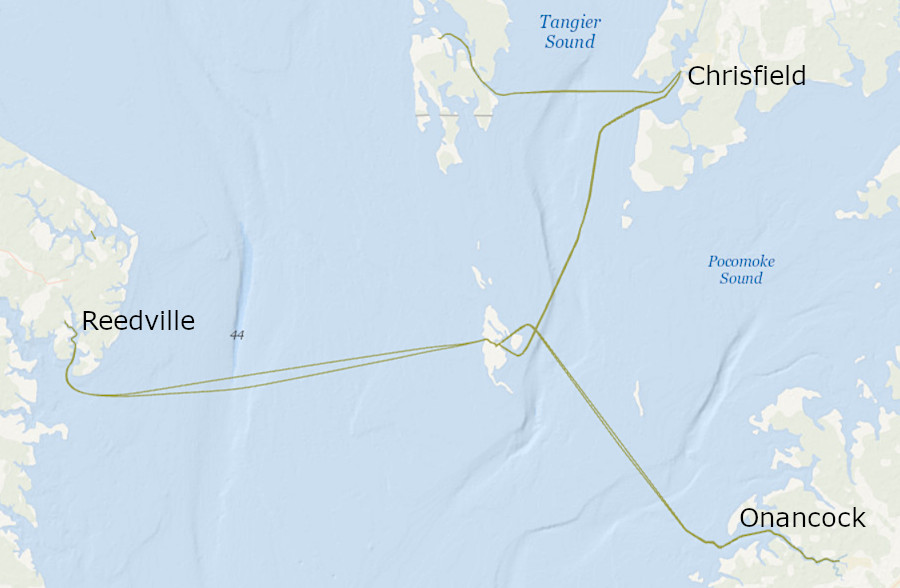
in 2021, ferries connected Tangier Island to Onancock, Crisfield, and Reedville
Source: Mid-Atlantic Regional Council on the Ocean, Mid-Atlantic Ocean Data Portal
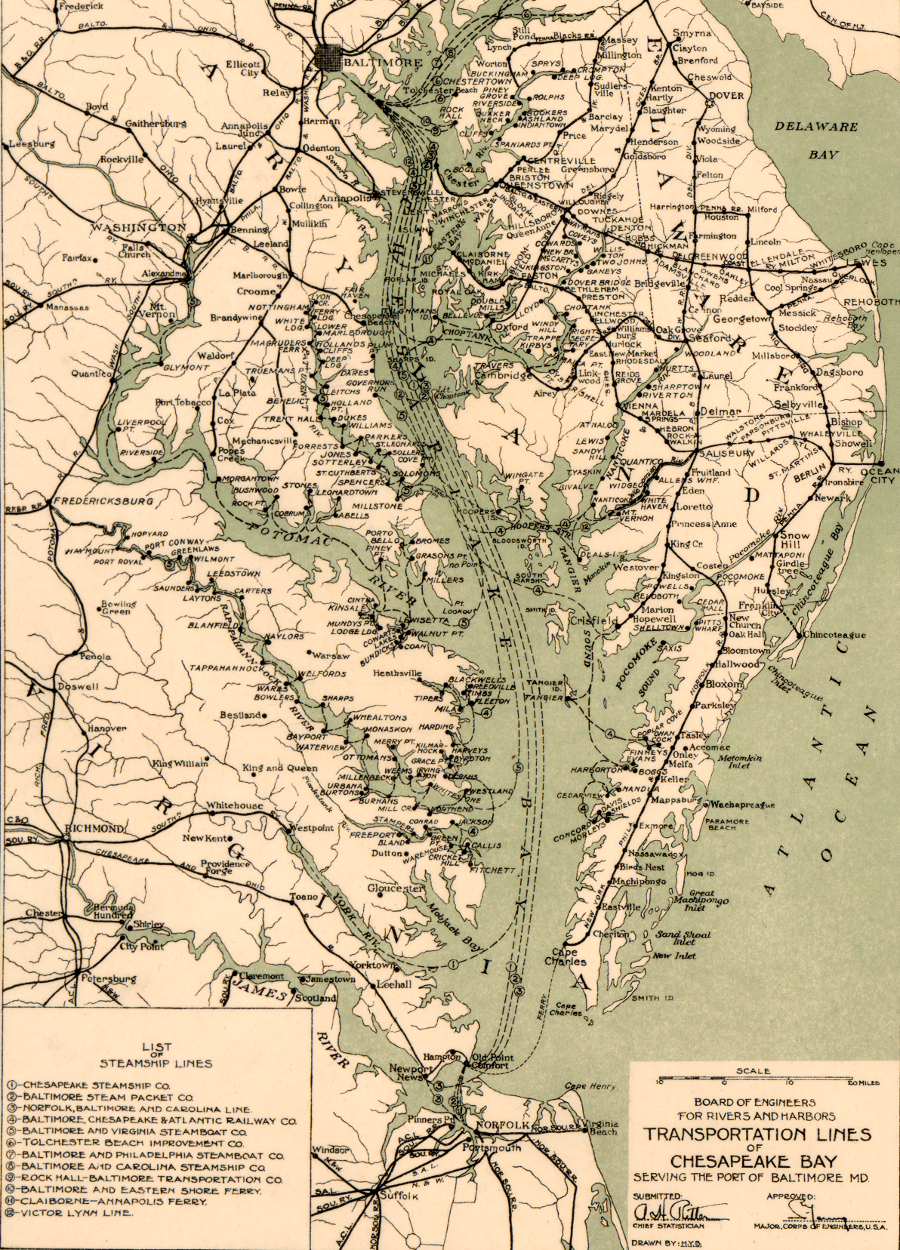
ferries linked Old Point Comfort to Baltimore in 1923, successfully competing with railroads for passengers and freight
Source: Library of Congress, Port facilities at Washington D.C. & Alexandria, Va